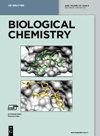Advances in preclinical TCR characterization: leveraging cell avidity to identify functional TCRs
IF 2.4
4区 生物学
Q3 BIOCHEMISTRY & MOLECULAR BIOLOGY
引用次数: 0
Abstract
T-cell therapy has emerged as an effective approach for treating viral infections and cancers. However, a significant challenge is the selection of T-cell receptors (TCRs) that exhibit the desired functionality. Conventionally临床前 TCR 特征描述的进展:利用细胞亲和力识别功能性 TCR
T 细胞疗法已成为治疗病毒感染和癌症的有效方法。然而,如何选择具有所需功能的 T 细胞受体(TCR)是一项重大挑战。传统的体外技术(如肽敏感性测量和细胞毒性测定)可提供有关 TCR 效能的宝贵信息,但需要耗费大量人力物力。相比之下,测量配体结合特性(z-Movi 技术)可以加速处理过程,同时显示出与 T 细胞功能的密切联系。在本研究中,我们评估了细胞热敏性是否也能预测 TCR 工程 T 细胞的功能。为此,我们开发了一种灵活的 TCR 重表达系统,通过 CRISPR-Cas9 介导的 TRBC 基因敲除,产生了一种缺乏 TCR 和 CD3 表达的 Jurkat 衍生 T 细胞克隆。将转基因 TCR 敲入 TRAC 基因座可恢复 TCR/CD3 的表达,从而可以基于 CD3 纯化 TCR 工程 T 细胞。随后,我们通过功能读数对这些工程细胞系进行了鉴定,并通过 z-Movi 技术对结合特性进行了评估。我们的研究结果表明,Jurkat TCR-T 细胞的细胞活性和功能敏感性之间存在很强的相关性。总之,通过将细胞热敏性测量与我们的多功能 T 细胞工程平台相结合,我们建立了一个加速系统,用于提高体外筛选临床相关 TCR 的能力。
本文章由计算机程序翻译,如有差异,请以英文原文为准。
求助全文
约1分钟内获得全文
求助全文
来源期刊

Biological Chemistry
生物-生化与分子生物学
CiteScore
7.20
自引率
0.00%
发文量
63
审稿时长
4-8 weeks
期刊介绍:
Biological Chemistry keeps you up-to-date with all new developments in the molecular life sciences. In addition to original research reports, authoritative reviews written by leading researchers in the field keep you informed about the latest advances in the molecular life sciences. Rapid, yet rigorous reviewing ensures fast access to recent research results of exceptional significance in the biological sciences. Papers are published in a "Just Accepted" format within approx.72 hours of acceptance.
 求助内容:
求助内容: 应助结果提醒方式:
应助结果提醒方式:


